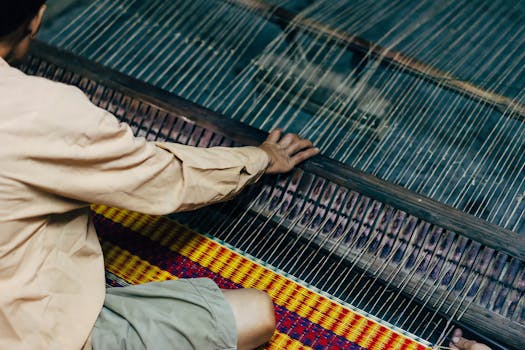
Fiber Futures: Innovations and Trends in Africa’s Textile Industry
Fiber Futures: Innovations and Trends in Africa’s Textile Industry is an exciting topic that has garnered significant attention in recent years. The African textile industry is experiencing a surge in innovations and trends, driven by advancements in fiber technology and growing demand for sustainable clothing. As the continent’s textile industry continues to evolve, it is essential to explore the latest developments and trends that are shaping the future of African textiles.
Introduction to Africa’s Textile Industry
Africa’s textile industry has a rich history, with evidence of textile production dating back to ancient civilizations. The industry has undergone significant transformations over the years, with the introduction of new technologies, materials, and manufacturing techniques. Today, the African textile industry is a significant contributor to the continent’s economy, providing employment opportunities for millions of people and generating substantial revenue.
The African textile industry is diverse, with different countries specializing in various types of textile production. For example, Egypt is known for its high-quality cotton production, while South Africa is a major producer of wool and synthetic fibers. Other countries, such as Kenya and Nigeria, have a strong focus on apparel manufacturing, with many international brands setting up production facilities in these countries.
Trends in Africa’s Textile Industry
There are several trends that are currently shaping the African textile industry. One of the most significant trends is the growing demand for sustainable clothing. Consumers are becoming increasingly conscious of the environmental and social impact of their purchasing decisions, and as a result, there is a growing demand for clothing made from sustainable materials. The African textile industry is responding to this trend by investing in sustainable fiber production, such as organic cotton and recycled polyester.
Another trend that is driving the African textile industry is the growth of e-commerce. Online shopping is becoming increasingly popular in Africa, and as a result, there is a growing demand for clothing that can be easily purchased and shipped online. The African textile industry is responding to this trend by investing in digital technologies, such as e-commerce platforms and social media marketing.
Innovations in Fiber Technology
Advances in fiber technology are also driving innovations in the African textile industry. New fiber types, such as bamboo and hemp, are being developed and used to create sustainable and durable clothing. Additionally, there are several initiatives underway to develop new textile production technologies, such as 3D printing and digital textile printing.
One of the most significant innovations in fiber technology is the development of recycled fibers. Recycled fibers are made from post-consumer waste, such as plastic bottles and old clothing, and can be used to create a wide range of textile products. The use of recycled fibers is not only sustainable but also reduces the amount of waste sent to landfills.
Conclusion
In conclusion, the African textile industry is experiencing a surge in innovations and trends, driven by advancements in fiber technology and growing demand for sustainable clothing. As the continent’s textile industry continues to evolve, it is essential to explore the latest developments and trends that are shaping the future of African textiles. With the growing demand for sustainable clothing and the development of new fiber technologies, the African textile industry is poised for significant growth and development in the coming years.